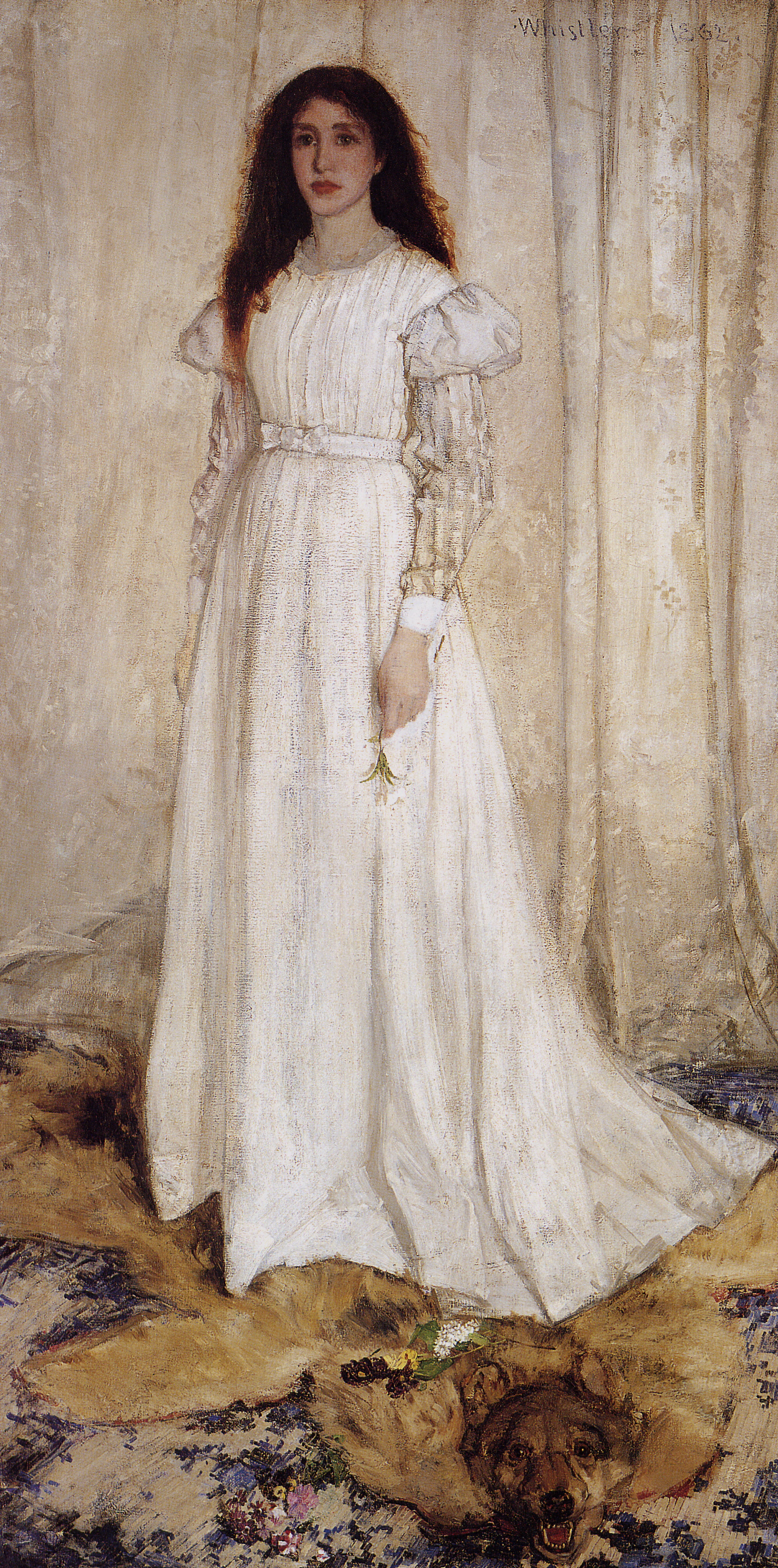The model in The White Girl (1862) is Joanna Heffernan, the artist's mistress. Their relationship has been referred to as a "marriage without benefit of clergy." Heffernan supposedly had a strong influence over Whistler; his brother-in-law Francis Seymour Haden refused a dinner invitation in the winter of 1863–64 due to her dominant presence in the household. The White Girl shows clearly the influence of the Pre-Raphaelite Brotherhood, with whom Whistler had recently come in contact. The painting has been interpreted by later art critics both as an allegory of innocence and its loss, and as a religious allusion to the Virgin Mary.
Before The White Girl, Whistler had already used Heffernan as a model for another painting. Wapping, named after Wapping in London where Whistler lived, was begun in 1860 but not finished until 1864. It shows a woman and two men on a balcony overlooking the river. According to Whistler himself, the woman – portrayed by Heffernan – was a prostitute.


 James Abbott McNeill Whistler
James Abbott McNeill Whistler